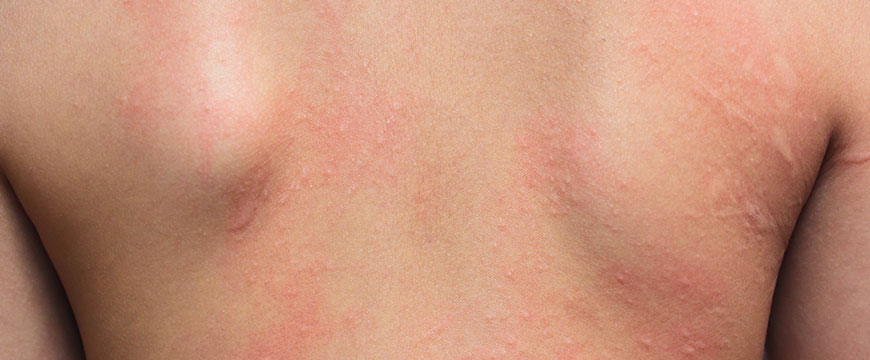
Those suffering from allergies frequently seek refuge inside their houses. Unfortunately, the place isn’t safe as sometimes they bring the allergens inside, sometimes even making the allergies worse, and you have to visit an allergy clinic.
Thankfully, you can eliminate indoor allergies and breathe easier in your house with thoughtful tweaks and methods.
We’ve compiled a list of strategies and items that you can use to make your life at home more joyful and allergen-free. Here they are:
Keep windows and doors closed to keep pollen out.
Closing and sealing doors and windows is the first major step in preventing outdoor allergens from entering your home.
You should keep all windows and exterior doors closed, especially during peak pollen times, such as early mornings and late afternoons.
You also should consider installing pollen-blocking window filters or screens in your windows. These can help keep pollen particles out of your home while allowing enough air circulation.
It’s also wise to consider sealing gaps around doors and windows with weatherstripping or door sweeps. This will help in the formation of a barrier against pollen infiltration.
Besides keeping your doors and windows closed all the time, you should limit your time outside, especially on windy days or when pollen concentrations are high. This decreases the pollen that may adhere to your clothing and carry inside.
As you come outside, remove any outer clothing and shoes that have come into contact with pollen. This will assist in keeping pollen from spreading throughout your home.
Invest in an air purifier.
Using an air purifier reduces allergy and asthma symptoms. It’s a little but powerful device that can help eliminate indoor allergies caused by everything from cooking smoke to outdoor contaminants that enter through windows.
Look for an air purifier with a HEPA (high-efficiency particulate air) filter. HEPA filters are designed to catch airborne particles as small as 0.3 microns in size, including pollen, pet dander, dust mites, and mold spores.
To keep the model running properly, double-check the square footage it can handle and clean or change the filter as advised.
You should install the air purifier in the room where you spend most of your time, such as your bedroom or living room. Place it in an area providing maximum air circulation and distribution.
It is wise to operate the air purifier continuously or at least when you are present in the room to maintain clean air. This guarantees that the air is constantly filtered and allergens are removed.
You should replace your filters regularly to keep the air inside. When doing the filter change, follow the manufacturer’s instructions. Depending on usage and local air quality, you should update the filters every 6 to 12 months.
While an air purifier can help remove allergens from the air, keeping your living space clean is crucial. Dust surfaces, vacuum carpets, and wash bedding regularly to reduce allergy collection.
Keep pets out of the bedroom.
We all adore our four-legged family members, but pet fur and dander can aggravate allergy symptoms. Make sure to groom your pet regularly, and keep the door to your bedroom closed. This reduces the number of allergens you’ll be exposed to, especially while sleeping.
If your pet is accustomed to sleeping in your bedroom, provide them a nice alternate sleeping spot somewhere in the house. Provide a nice bed or crate in another room to ensure their comfort.
Positive reinforcement and deterrents can also be effective in training pets to avoid certain regions. To dissuade your pet from entering the bedroom, use pet gates, fragrant deterrent sprays, or noise-making devices near the door.
Brushing and bathing your pet regularly can help minimize the stray hair and dander they shed. This reduces the allergy burden in your entire house.
Keep your house clean.
By keeping the house clean, you get rid of most of the allergens. Vacuum your carpets at least once or twice a week; you should do it more frequently if you have pets.
Carpets can trap allergies and create irritation, so vacuuming regularly keeps allergens at bay.
As a rule of thumb, you should wear a face mask when vacuuming to avoid inhaling all the dust that will float around.
For the best outcome, use a high-quality vacuum with a HEPA filter. HEPA filters catch microscopic particles, including allergens, and prevent them from recirculating in the air.
You also should make it a habit to dust the surfaces regularly with a moist cloth or an electrostatic duster. This aids in trapping and removing allergen-containing dust particles such as pollen, pet dander, and dust mites.
When it comes to the floors, clean them with a moist mop or microfiber cloth, which helps to trap and remove allergens effectively. Avoid dry methods, such as sweeping, as they stir up allergens in the air.
When it comes to bedding, to get rid of dust mites and related allergies, wash the sheets, pillowcases, and blankets regularly in hot water. To further protect against dust mites, consider utilizing allergen-proof covers for mattresses, pillows, and duvets.
You should also regularly clean your drapes and blinds to remove dust and allergens. When purchasing, choose washable drapes that you can easily clean regularly.
Use a Neti pot
One final and highly effective way to alleviate your indoor allergies is to use a Neti Pot to keep your sinuses free. This ancient and doctor-recommended medicinal practice is a simple and effective approach to keeping your nasal passageways clean of trapped allergens and a powerful strategy to decrease disease.
Clean out your nasal sinus passages with specific saline packets and distilled water for the best outcome. It may initially feel strange, but it improves your thinking and breathing.
If this is your first time trying, consult your allergy doctor Manassas VA on how to use it properly.








